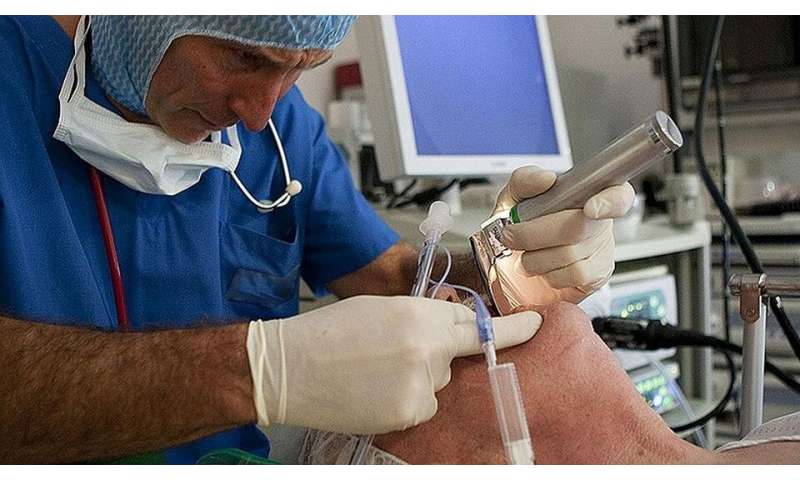
It’s widely known that patients who are intubated for five to six hours during lengthy surgeries are at greater risk for follow-up complications to the larynx (voice box) such as sore throat, difficulty swallowing and hoarseness. Now, Johns Hopkins Medicine researchers have shown that similar problems also may occur in patients intubated for a much shorter period.
In a systematic review of published research on laryngeal injury following intubation, a research team led by Martin Brodsky, Ph.D., Sc.M., associate professor of physical medicine and rehabilitation at the Johns Hopkins University School of Medicine, determined that damage to the larynx can occur with an endotracheal tube in place for as little as one or two hours. Although the injury from short-term intubation is most often mild, it can impact a patient’s breathing, swallowing or speaking, requiring separate treatment and more recovery time.
The findings were reported in the Nov. 11, 2020, issue of the journal Anesthesia & Analgesia.
Although the most common complications from intubation are mild, more serious problems can occur. “It is important that both patients and their treating physicians be aware of these possible risks,” says Brodsky.
The good news, he says, is that for the majority of patients—some 80%—their breathing tubes will be removed after surgery with no injury. The remainder are likely to experience swelling, redness, irritation and abrasions that will generally heal on their own.
Although serious complications such as paralysis and subluxation (dislocation of the cartilage) of the larynx can occur with intubation, they are very rare—they occur in less than 0.5% of cases.
“Based on the findings from our study, we urge doctors to make sure patients understand that when they are going to be intubated during a surgical procedure—whether it will be a short or long operation—there are risks involved from injury to the larynx,” says Brodsky. “Being intubated for one to two hours does not eliminate the possibility of long-term damage.”
Source: Read Full Article
